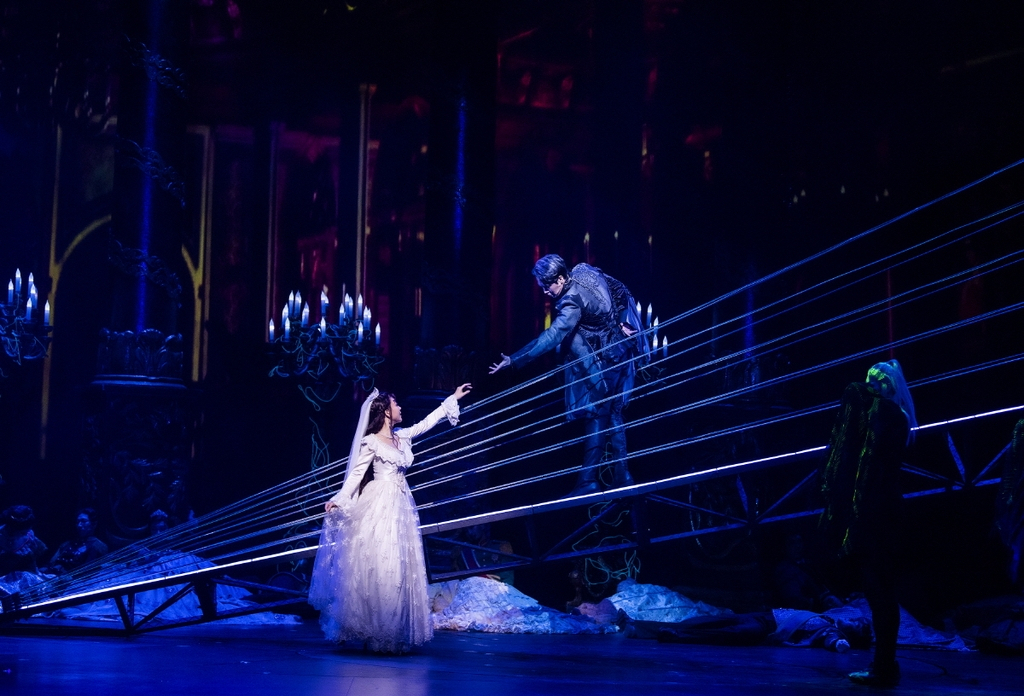 |
A scene from the musical Elizabeth (EMK) |
Last year’s ticket sales for Korea’s performing arts scene not only returned to pre-pandemic levels but jumped 43 percent from 2019, according to data released by the Korea Performing Arts Box Office Information System Wednesday.
The combined revenue of 14,447 musicals, theatrical plays, classical concerts and other performances came to 55.90 billion won ($45 million) in 2022, up 43 percent from pre-pandemic revenue in 2019. Compared with 2021, the figure soared by 82 percent. In terms of performance numbers, the performing arts also enjoyed a robust year, jumping 36 percent in a year.
Korea has now lifted most social distancing measures and pent-up demand for performances has contributed to the strong growth, which was led by musicals.
The dominance of musicals in the performing arts ticket revenue continued, occupying 76 percent of total revenue with 425 billion won. Overall, the top 20 performances in terms of revenue were all musicals, including 13 licensed productions, four Korean tours of foreign groups and three Korean original musicals.
In 2022, the musical market saw record ticket revenue with increase in both number of performances and the number of tickets sold.
“It’s not a temporary expansion of the market due to increased ticket prices. Rather, the market saw all around growth last year in ticket numbers and revenue, which shows there was a genuine increase of new musical lovers,” an official at KOPIS said.
Korea's performing arts market is expected to continue to grow this year, according to KOPIS, as more concert halls such as Bucheon Art Center and Inspire Arena in Yeongjong Island, Incheon, will open. There is also a long line-up of various performances -- new and delayed ones -- which are set to take place.
"If the growth and momentum in 2022 are maintained without external factors that greatly affect the performance market, such as pandemics, large-scale events and accidents, the Korean performance market will grow to more than 900 billion won in 2023," KOPIS predicted.







![[Today’s K-pop] Blackpink’s Jennie, Lisa invited to Coachella as solo acts](http://res.heraldm.com/phpwas/restmb_idxmake.php?idx=644&simg=/content/image/2024/11/21/20241121050099_0.jpg)